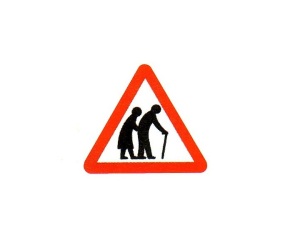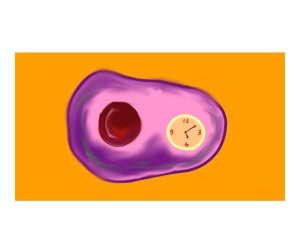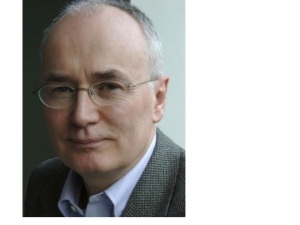Dorothy was born in 1911. She is 102. When someone over 100 is admitted to our ward there is always a lot of interest – but it is happening more and more. Dorothy, or Dot, as she is known by her friends, has been living on her own in sheltered housing. She has her own ground floor flat, but eats meals with the other elderly residents and has help with washing and dressing in the morning, and there is always a manager on hand if there are problems.  She can make herself simple meals and cups of tea, and her 78 year-old son, David, usually visits every Sunday. I saw her in our ward last week. She had fallen over on Sunday night and bashed her head on the edge of a table, resulting in a huge bruise over her right eye. She has atrial fibrillation and is on warfarin – the ambulance crew brought her in to hospital as she was a bit confused and they were worried she might have a blood clot on her brain.
She can make herself simple meals and cups of tea, and her 78 year-old son, David, usually visits every Sunday. I saw her in our ward last week. She had fallen over on Sunday night and bashed her head on the edge of a table, resulting in a huge bruise over her right eye. She has atrial fibrillation and is on warfarin – the ambulance crew brought her in to hospital as she was a bit confused and they were worried she might have a blood clot on her brain.

Luckily the CT scan of her head showed no evidence of serious bleeding, although her brain was considerably shrunken compared to a young person. She was quite deaf, but clearly had most of her marbles. She recounted how her father had fought, and was wounded, in the Battle of the Somme in the first world war, and her husband Rodney, who died in 1980 had fought in the second. She worked in a munitions factory during the war and had three children – all boys. It’s strange calling elderly people children, but offspring or any other word does not seem quite right. Only the youngest was still alive. She could remember the names of all 5 grandchildren and 7 great-grandchildren, but did struggle with the name of the Prime Minister and what year it was. Her brain was old as well as her skin and her ears, and all the rest of her.
How much longer will Dot live? There was an entertaining paper in the Christmas BMJ in 2011. http://www.bmj.com/content/343/bmj.d7679
It has been shown that for any cohort of elderly people, the main determinant of longevity is how old you are – as we get older the more likely we are to die sooner. The second most important factor is gender – women live longer than men. The third, somewhat surprisingly, is how fast you can walk. This is probably because being able to walk fast requires a lot of things to be working well – good lungs, good cardiac function, good muscles, good joints, good brain function, good eyesight, good peripheral nerve function etc. The paper suggests another alternative explanation – that if you walk slowly the grim reaper will catch up with you.

(with permission – thanks Belle)
Why do people get old? This is a difficult question, and I cannot give you a definite answer, but will give you my thoughts. Ageing (aging in the US) seems inevitable. We can guess how old someone is by their skin, which becomes wrinkled – their hair becomes thin and grey, and their posture becomes bent. The cells in our skin, bones, brain and just about everywhere else continually become older, but some of our cells do not age in the same way. Think about a sixty year old man who becomes a new father. His sperm have contributed to make a baby that is not old, but brand new. The cells in his testes which have made the sperm are old, but they must have in them the information about how to make a cell which is not old. This, to me, very much suggests that old cells have not lost the information in the form of DNA sequence that they had when they were new. The creation of Dolly the sheep confirms this. Dolly was made from the nucleus of her “mother’s” mammary gland cell (she was called Dolly after Dolly Parton, who has very impressive mammary glands). In a test-tube this nucleus was inserted into an egg cell of another sheep (also her mother?) and processed to de-differentiate it.

This means the nucleus of the mammary gland cell was changed so that instead of only being able to make more, old, mammary gland cells, it could make all the new and different cells of baby Dolly the sheep. So, I’ll ask the question again, why do cells get old? It’s not that they have lost the information about how to be new cells, but nature has determined that after a certain period of time they change into old cells. What is happening in the cells to make them old? – clearly they are not so damaged that the DNA sequence is irreparably altered. There must be a clock inside cells that tells them how old they are – this is suggested by the classic studies of Leonard Hayflick, who showed that cells from human babies only divide about 50 times, and then stop.

Cells from older people divide far fewer times. It was thought for many years that the reason cells could only divide a certain number of times was because each time division took place, the teleomeres at the end of each chromosome become shorter. When they become too short, the cell can no longer divide. Teleomeres have been likened to like the plastic bits at the end of shoelaces – they stop the lace from fraying and are necessary in chromosomes to keep the DNA strands from coming apart.
It may well be that short teleomeres contribute to the cellular clock, but it seems they are not the only answer.

More recent research suggests that epigenetic changes in DNA may be responsible. Epigenetics is a very fashionable science. Once a cell is differentiated in the growing embryo – say into a skin cell – its DNA becomes progressively altered. In particular methyl groups (CH3) become attached to a cytosine nucleotide when a cytosine and guanine are next to each other in the nucleic acid chain (CpG). This methyl group attached to the cytosine is copied when the cell divides. Recent research suggests that the age of cells is closely related to the number of methyl groups attached to CpG sequences in DNA.
http://genomebiology.com/2013/14/10/r115
What to me is really interesting, is that when sperm cells meet egg cells and their nuclei fuse to make the start of a new baby, all the methyl groups are stripped from the CpG sequences in DNA. This looks like a definite candidate for the cellular clock.
But why do we need to age? What if cells stayed “new”? What if we could stop the cellular clock? If we could inject a substance into Dot which reversed the epigenetic changes would she suddenly get lovely wrinkle-free baby-like skin and a fully functioning brain, ears and eyes? I don’t know, but I suspect not – answers please.
Why did evolution invent a clock in our cells to stop them dividing as we get older? One explanation for this is that cells become damaged with time, and dividing may not be a good thing for damaged cells as it is more likely that they will become malignant. We now know that most malignant cells develop a sequence of gene defects over time, which when added together cause the cell to become cancerous. Maybe the clock, which limits the number of divisions, is a way of preventing further DNA damage and malignancy. Certainly it seems that reactive oxygen compounds that can cause damage to DNA also cause CpG methylation – in a way causing premature ageing of cells.
I used to think that the reason our cells got older was so that we would die and no longer be competition for our children, who, through evolution, had become more fit than us. It seems this is not the explanation because there is very good evidence that early humans did not die from age-related causes, but from infections and trauma. The average life-span in prehistoric times was much lower than in modern times, most people dying before 30 and nearly all before 40 years of age. This means that it is not possible for evolution to select for, or against, those people who lived longer, because there were so few of them. Instead it seems that evolution only cares about keeping us alive until we have produced and reared babies – after that it has no interest or influence one way or the other. If there was a new gene that made a prehistoric human live longer, it would be extremely unlikely that the owner would survive longer and there would be no positive or negative pressure to keep it. This does not mean that our genes cannot influence how long we live. An important factor in determining how long we live is how long our parents lived. Another is where we live and our lifestyle.

There is a wonderful book by an erstwhile colleague of mine, Roger Corder, called The Red Wine Diet, which suggests that eating foods with certain polyphenols can make us live longer.

Polyphenols are found in plants and are often brightly coloured. Tannins are polyphenols, and cause a characteristic “furry” taste in the mouth because they react with the protein molecules on the surface of our tongue. These molecules are powerful antioxidants. What does that mean, and why do plants make them? In the case of a grape, one of its main concerns is DNA damage by ultraviolet light. Although short wavelength UV light can directly damage DNA, it seems that less powerful, longer wavelength rays can generate very reactive oxygen radicals such as singlet oxygen and hydroxyl, which then combine with, and damage DNA. Polyphenols can rapidly “mop up” or detoxify these oxygen radicals and protect DNA. If you live in the mountains of SW France, Sardinia, Crete or Sicily, the plants, and especially grapes, are subjected to large amounts of UV irradiation and produce lots of polyphenols. The people who live eat and drink lots of these polyphenols live to an unexpected old age. It might be a coincidence, but, for me, the inconvenience, expense and sheer tedium of drinking three glasses of red wine a day seems worth a try. But don’t overdo it and do remember Kevin (vodka and sweetbreads) below. The food link this week is a drink – Malbec.

This is a grape variety, which, according to Roger Corder, contains very high levels of procyanidins – tannins which he thinks helps protect us from heart disease and cancer, and makes us live longer. Antioxidants prevent the oxidation of LDL cholesterol (see previous post on chest pain and horsemeat lasagne) and reduce DNA damage that can make normal cells malignant and age more quickly. It is grown in the mountains of SW France and is the main variety in Cahors wine – a particularly dark and astringent glassful. Argentinian Malbec is more available in the UK and is also grown high up in the mountains where it gets plenty of ultraviolet light.